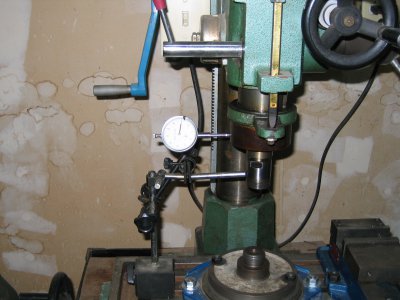I have an RF31 clone. So far I have not had to move the head to change tooling. Probably just lucky. But I also go through all of the tooling I intend to use and make a dry run changing out the tooling. Then set the head so I don't have to move it. I set my mill/drill up with an ER32 to R8 adapter. It doesn't take up much room and I have found that ER32 collets have a lot of what I call wiggle room when things are tight and I need to change tooling.
I looked into all kinds of modifications to deal with the alignment issue. During that search I ran across a very simple solution. If I can find the video again I will post it. The solution used a magnetic base with a rod and a dial indicator. Before moving the head the rod is placed against the quill and the dial indicator is set to zero. Move the head and change your tooling. Bring the head back to just touching the rod until the DI reads zero.
View attachment 312484
If you can find a small square column mill or knee mill within your budget go for it. Otherwise get a round column mill/drill. The mill/drill will most likely suit your needs for a long time.




